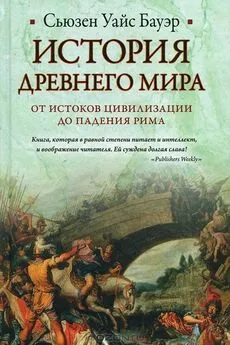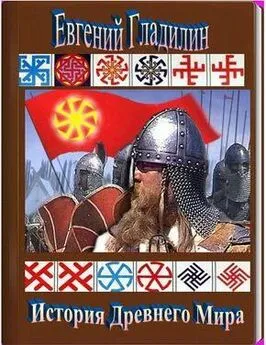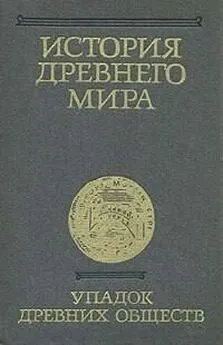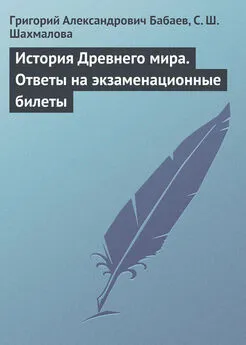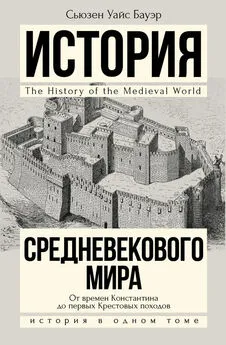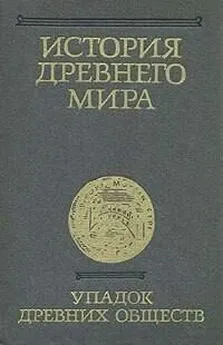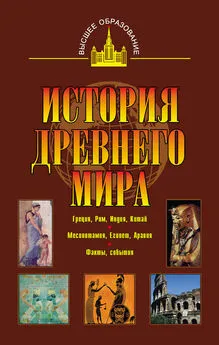Сьюзен Бауэр - История Древнего мира: от истоков цивилизации до падения Рима
- Название:История Древнего мира: от истоков цивилизации до падения Рима
- Автор:
- Жанр:
- Издательство:АСТ, Астрель
- Год:2011
- Город:Москва
- ISBN:978-5-17-057026-3, 978-5-271-37483-8
- Рейтинг:
- Избранное:Добавить в избранное
-
Отзывы:
-
Ваша оценка:
Сьюзен Бауэр - История Древнего мира: от истоков цивилизации до падения Рима краткое содержание
В этой книге Сьюзен Бауэр выдвигает и доказывает интереснейшую теорию взаимодействия и взаимопроникновения культур самых разных западных и восточных цивилизаций.
Не просто сухие факты, но подробный и яркий рассказ о внешней и внутренней политике государств древности, об их литературе, религии и мифологии, повседневной жизни и системе управления.
Результатом становится потрясающая мозаика событий, свидетельств и документов, в которой в равной степени важен каждый элемент.
История Древнего мира: от истоков цивилизации до падения Рима - читать онлайн бесплатно полную версию (весь текст целиком)
Интервал:
Закладка:
‹540›Livy 1.6, Early History of Rome, p. 39.
‹541›Ibid., p. 40.
‹542›Livy, 1.1, Early History of Rome, p. 33.
‹543›R. M. Ogilvie, «Introduction: Livy», in Livy, Early History of Rome, p. 17.
‹544›Livy, 1.7–9, Early History of Rome, pp. 42–43.
‹545›Livy, 1.9, Early History of Rome, p. 43.
‹546›Livy, 1.13–14, Early History of Rome, pp. 48–49.
‹547›Buckley, p. 39.
‹548›Hesiod, Works and Days, 11. 37–40, in Theogony, Works and Days, Shield (2004), p. 66.
‹549›Ibid., 11. 220–221, p. 70.
‹550›Ibid., 11.230–235, p. 71.
‹551›Saggs, Assyria, p. 81.
‹552›2 Kings 14:25–28.
‹553›Luckenbill, Ancient Records, vol. 1, p. 114.
‹554›Saggs, Assyria, p. 80.
‹555›Ibid., p. 83.
‹556›Ibid.
‹557›Olmstead, History of Assyria, p. 124.
‹558›Oates, p. 112.
‹559›Hayim Tadmor, The Inscriptions of Tiglath-Pileserlll, King of Assyria (1994), p. 45.
‹560›Ibid.
‹561›Oates, p. 114.
‹562›Saggs, Assyria, p. 88.
‹563›Luckenbill, Ancient Records, vol. 1, p. 273.
‹564›Ernest A. Fredricksmeyer, «Alexander, Midas, and the Oracle at Gordium», Classical Philology 56:3(1961), p. 160.
‹565›Herodotus, 1.14.
‹566›2 Kings 15–16.
‹567›Реконструкция по фрагментарному переводу, предложенному в: Oates, p. 114, а также Brevard S. Childs в Isaiah and the Assyrian Crisis (1967), p. 81.
‹568›Olmstead, History of Assyria, p. 179.
‹569›Luckenbill, Ancient Records, vol. 1, p. 285.
‹570›Daniel David Luckenbill, «The First Inscription of Shalmaneser V», American Journal of Semitic Languages and Literatures 41:3 (1925), p. 164.
‹571›Luckenbill, Ancient Records, vol. 1, p. 283.
‹572›Josephus, Antiquities of the Jews, 9.14, in The Works ofJosephus (1987), pp. 264–265.
‹573›2 Kings 17:4, NIV.
‹574›Clayton, p. 189; Jan Assmann, The Mind of Egypt. History and Meaning in the Time of the Pharaohs (2002), p. 312.
‹575›Assmann, pp. 317–319.
‹576›Quoted in Assmann, p. 320.
‹577›Saggs, Assyria, p. 92.
‹578›Daniel David Luckenbill, Ancient Records of Assyria and Babylon, Volume II: Historical Records of Assyria from Sargon to the End (1927), p. 71.
‹579›Ibid., p. 2; 2 Kings 17:6.
‹580›Luckenbill, Ancient Records, vol. 2, p. 2.
‹581›Ibid., p. 3.
‹582›A. Leo Oppenheim, «The City of Assur in 714 B.C.», Journal of Near Eastern Studies 19:2 (1960), pp. 142, 147.
‹583›Paul Zimansky, «Urartian Geography and Sargon’s Eighth Campaign», Journal of Near Eastern Studies 49:1 (1990), p. 2.
‹584›Translated in Saggs, Assyria, p. 93.
‹585›Ibid., p. 94.
‹586›Oppenheim, «The City of Assur in 714 B.C.», p. 134.
‹587›Luckenbill, Ancient Records, vol. 2, p. 10.
‹588›Zimansky, p. 3.
‹589›Laessoe, p. 113; Hoyland, p. 19.
‹590›J. A. Brinkman, «Elamite Military Aid to Merodach-Baladan», Journal of Near Eastern Studies 24:3 (1965), pp. 161–162.
‹591›Oates, p. 116.
‹592›Сжатый пересказ из анналов Саргона в переводе из: Brinkman, «Elamite Military Aid», p. 163.
‹593›Luckenbill, Ancient Records, vol. 2, p. 15.
‹594›Oates, p. 116.
‹595›Isa. 14:29, NIV.
‹596›Daniel David Luckenbill, The Annals of Sennacherib (1924), p. 9.
‹597›Ibid., p. 10.
‹598›Grant Frame, Rulers of Babylonia from the Second Dynasty oflsin to the End of Assyrian Domination (1157–612 BC) (1995), p. 137.
‹599›Luckenbill, Annals, pp. 10–11.
‹600›Assmann, p. 335.
‹601›This quote and following from 2 Kings 20:12 ff., NIV.
‹602›This quote and following from 2 Kings 18:1 ff., NIV.
‹603›Luckenbill, Annals, p. 10.
‹604›Сжатый и несколько модифицированный вариант текста из: Luckenbill, Annals, p. 10.
‹605›Herodotus, 2.14.
‹606›The Nebi Yunus Inscription (H4), translated in Luckenbill, Annals, p. 85.
‹607›Luckenbill, Annals, p. 15.
‹608›Ibid., p. 16.
‹609›Ibid., p. 17.
‹610›Emil G. Kraeling, «The Death of Sennacherib», Journal of the American Oriental Society 53:4 (1933), p. 338.
‹611›Xueqin, p. 16.
‹612›Ch’ien, p. 74.
‹613›Fairbank and Goldman, p. 49.
‹614›Xueqin, p. 37.
‹615›Ch’ien, p. 75.
‹616›G. W. Ally Rickett, trans., Guanzi, vol. 1 (1985), p. 5.
‹617›Ibid., p. 6.
‹618›Ch’ien, p. 75.
‹619›Ibid.
‹620›Tso chuan, quoted by Nicola Di Cosmo in Ancient China and Its Enemies: The Rise of Nomadic Power in East Asian History (2002), pp. 98–99.
‹621›Ch’ien, p. 76.
‹622›Ibid., p. 77.
‹623›Isa. 37:38, NIV.
‹624›Адаптация перевода Р. Ч. Томпсона, приведенного в: Kraeling, pp. 338–340.
‹625›Olmstead, History of Assyria, p. 343.
‹626›Frame, p. 164.
‹627›Olmstead, History of Assyria, p. 351.
‹628›Адаптация пересказа Дж. А. Бринкманом (J. A. Brinkman) различных версий надписей Ac-сархадона в: «Through a Glass Darkly: Esarhaddon’s Retrospects on the Downfall of Babylon», Journal of the American Oriental Society 103:1 (1983), p. 39.
‹629›Brinkman, «Through a Glass Darkly», p. 41.
‹630›Frame, 167.
‹631›Francis Reynolds, ed., State Archives of Assyria, vol. 18: The Babylonian Correspondence of Esarhad-don and Letters to Assurbartipal and Sin-saru-iskun from Northern md Central Babylonia (2003), p. 4.
‹632›E. D. Phillips, «The Scythian Domination in Western Asia: Its Record in History, Scripture, and Archaeology», WorldArchaeology 4:2 (1972), p. 131.
‹633›Слегка перефразированный для лучшего понимания перевод из: Ivan Starr, State Archives of Assyria, vol. 4, Queries to the Sungod: Divination and Politics in Sargonid Assyria (1990), Queries 18,20, 24, and 43, pp. 22, 24–25,30,48.
‹634›С. H. Emilie Haspels, The Highlands of Phrygia: Sites and Monuments, vol. 1, The 7ert (1971).
‹635›Strabo, The Geography of Strabo in Eight Volumes (1928), 1.3.21.
‹636›Luckenbill, Ancient Records, vol. 2, pp. 516, 530,533,546.
‹637›Starr, Query 84, p. 98.
‹638›Несколько сокращенный текст из: Laessoe, p. 114.
‹639›Clayton, p. 193.
‹640›Shaw, p. 358.
‹641›Несколько сокращенный текст из: Frame, p. 194.
‹642›Clayton, p. 195.
‹643›Стела Гебель Барка, перевод из: Assmann, pp. 336–337, язык несколько осовременен.
‹644›Herodotus, 2.151; also Redford, Egypt, p. 431.
‹645›Assmann, p. 337.
‹646›James Henry Breasted, A History of Egypt (1967), p. 468.
‹647›Nah. 3:8–10.
‹648›Olmstead, History of Assyria, p. 417.
‹649›Ibid., p. 422.
‹650›Стела Нитикрет, несколько перефразированный вариант перевода из: Shaw, p. 376.
‹651›Olmstead, History of Assyria, p. 423.
‹652›Phillips, «The Scythian Domination in Western Asia», p. 132.
‹653›Konstantinos Staikos, The Great Libraries: From Antiquity to the Renaissance (3000 BC to AD 1600) (2000), p. 13.
‹654›Condensed slightly from Benjamin R. Foster, Before the Muses: An Anthology of Akkadian Literature, vol. 2 (1996), p. 714.
‹655›Frame, p. 255.
‹656›Ibid., p. 258.
‹657›Хронологически размещенные эпиграфы из John Malcom Russell, The Writing on the Wall: Studies in the Architectural Context of Late Assyrian Palace Inscriptions (1999), p. 159.
‹658›Herodotus, 1.98.
‹659›A. T. Olmstead, History of the Persian Empire (1959), p. 30.
‹660›Starr, pp. 267–270.
‹661›Saggs, Babylonians, p. 161.
‹662›Frame, p. 260.
‹663›Saggs, Babylonians, p. 114.
‹664›Ezra 4:9–10, NIV.
‹665›P. Calmeyer, «Greek Historiography and Acheamenid Reliefs», in Achaemenid History II: The Greek Sources, ed. Heleen Sancisi-Weerdenburg and Amelie Kuhrt (1987), p. 11.
‹666›David Frankel, The Ancient Kingdom of Urartu (1979), p. 19.
‹667›Phillips, p. 135.
‹668›2 Kings 23.
‹669›Herodotus, 1.105.
‹670›Ibid., 1.106.
‹671›Buckley, p. 37.
‹672›Phaedo 109b, quoted in Robin Waterfield, Athens (2004), p. 41.
‹673›Pomeroy et al., p. 92.
‹674›Herodotus, 4.156–157.
‹675›Ibid., 4.159.
‹676›Fragment 5, quoted in Buckley, p. 66.
‹677›Fragment 6, quoted in Buckley, p. 67.
‹678›Herodotus 6.52.
‹679›Luckenbill, Ancient Records, vol. 2, pp. 291–292.
‹680›Herodotus, 6.57.
‹681›Lycurgus 15, in Plutarch, Greek Lives, translated by Robin Waterfield (1998), p. 24.
‹682›Lycurgus 12–14, in Plutarch, Greek Lives, pp. 18–22.
‹683›Lycurgus 10, in Plutarch, Greek Lives, p. 18.
‹684›Herodotus, 7.104.
‹685›Waterfield, p 39.
‹686›Eusebius, Chronicle, in A. Schoene and H. Petermann, trans. Armeniam versionem Latine factam AD libros manuscriptos recensuit H. Petermann (1875), pp. 182–183.
‹687›Waterfield, p. 43.
‹688›Eusebius, Chronicle, p. 198.
‹689›Thucydides, 1.125.
‹690›Thucydides, 1.126.
‹691›Solon 12, in Plutarch, Greek Lives, p. 55.
‹692›Athenian Constitution, translated by H. Rackham, 2.1–3, in Aristotle in 23 Volumes, vol. 20.
‹693›Solon 17, in Plutarch, Greek Lives, p. 61.
‹694›Lycurgus 15, in Plutarch, Greek Lives, p. 25.
‹695›Michael Gagarin, Drakon and Early Athenian Homicide Law (1981), pp. 19–21.
‹696›Solon 1, in Plutarch, Greek Lives, p. 46.
‹697›Solon 14, in Plutarch, Greek Lives, p. 57.
‹698›Buckley, pp. 91–92.
‹699›Solon 6, in Plutarch, Greek Lives, p. 50.
‹700›Herodotus, 1.29.
‹701›Solon 25, in Plutarch, Greek Lives, pp. 69–70.
‹702›Livy, 1.15, Early History of Rome, p. 50.
‹703›R. M. Ogilvie, «Introduction: Livy», in Livy, Eariy History of Rome, p. 18.
‹704›Livy, 1.1–1.2, Early History of Rome, pp. 34–36.
‹705›Livy, 1.15, Early History of Rome, p. 50.
‹706›Livy, 1.16, Early History of Rome, p. 51.
‹707›Livy, 1.19, Early History of Rome, p. 54.
‹708›Dionysius of Halicarnassus, Roman Antiquities, vol. 1, Books I–II (1937), 2.62.
‹709›Livy, 1.33, Early History of Rome, p. 72.
‹710›Dionysius of Halicarnassus, Roman Antiquities, vol. 2, Books III–IV (1939), 3.45.
‹711›Gary Forsythe, A Critical History of Eariy Rome: From Prehistory to the First Punic War (2005), pp. 39–40.
‹712›Salvatore Settis, ed., The Land of the Etruscans: From Prehistory to the Middle Ages (1985), p. 30.
‹713›Jacques Heurgon, Daily Life of the Etruscans (1964), p. 136.
‹714›Christopher S. Mackay, Ancient Rome: A Military and Political History (2004), p. 12.
‹715›Dionysius of Halicarnassus, Roman Antiquities, vol. 2,3.61–62.
‹716›Ray Kamoo, Ancient and Modem Chaldean History: A Comprehensive Bibliography of Sources (1999), p. XXXI.
Читать дальшеИнтервал:
Закладка:
